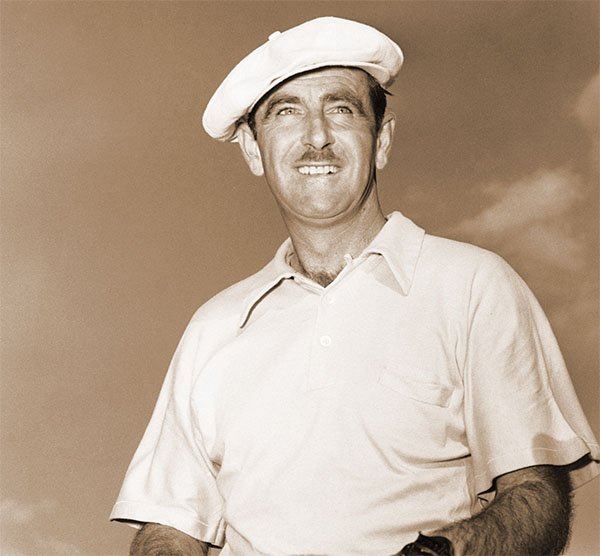In a discussion of the game's best players, Lloyd Mangrum's name is not likely to come up very often. He is not as well known as Nicklaus, Palmer, Woods, Hogan, Nelson or Player. James Murray, the late Pulitzer-winning columnist for the Los Angeles Times, once dubbed him golf's "forgotten man."
 Mangrum turned professional in 1929 at age 15 and joined the PGA Tour eight years later. He died a young man at age 59 in 1973. As Murray's nickname indicates, Mangrum and his career in golf have a footnote in history.
Mangrum turned professional in 1929 at age 15 and joined the PGA Tour eight years later. He died a young man at age 59 in 1973. As Murray's nickname indicates, Mangrum and his career in golf have a footnote in history.
That's too bad. What Mangrum accomplished on the golf course is unmatched by some of the game's greats. What he did off the course in the U.S. Army was even greater.
Throughout his career, which was interrupted by active duty during World War II, this steely Texan amassed 36 PGA Tour wins. That's more than Vijay Singh, Horton Smith, Lee Trevino, Johnny Miller, Gary Player, Raymond Floyd, Davis Love III, Hale Irwin, Greg Norman, Ben Crenshaw, Tom Kite and Julius Boros.
Only a dozen players - Sam Snead, Tiger Woods, Jack Nicklaus, Ben Hogan, Arnold Palmer, Byron Nelson, Billy Casper, Walter Hagen, Phil Mickelson, Cary Middlecoff, Tom Watson and Gene Sarazen - won more Tour events than Mangrum.
We are reminded on Veteran's Day, during a November Masters week, that despite Mangrum's accomplishments with a club in his hands, some of his most important contributions were made while toting a rifle.
Mangrum served in the Army during World War II, eventually attaining the rank of staff sergeant. While troops were training early in 1944 for Operation Overlord, the Allied invasion of Normandy, Mangrum was offered the position of golf pro at the Army's golf course at Fort Meade in Maryland.
Spending the duration of the war playing golf or serving in active combat duty seems like an easy choice. And for Mangrum, it was. He believed helping rid the world of fascism was more important than remaining stateside and playing the game he loved. Mangrum was but one of many professional golfers to serve during wartime, but few walked where he did.
He was among the hundreds of thousands of troops who stormed the beaches of Normandy in 1944 when the Allied forces launched the invasion of the European mainland that turned the tide of the war. Within a month, more than 1 million troops came ashore on those French beaches in a barrage of manpower that eventually repelled Hitler's Third Reich.
By Christmas, Mangrum and the rest of Gen. George Patton's Third Army had advanced to the Ardennes Forest in Belgium for what has become known as the Battle of the Bulge, a conflict called the most violent campaign in modern warfare.
By war's end, Mangrum was a highly decorated soldier and two-time recipient of the Purple Heart.
Mangrum found his greatest playing success after returning home from Europe. He won 31 of his 36 PGA Tour titles after the war, including the 1946 U.S. Open at Canterbury. In 1951, he was the Tour's leading money winner and won the Vardon Trophy for lowest scoring average, a feat he accomplished again in 1953, the same year he captained the U.S. Ryder Cup team. Despite his accomplishments, his career was largely overshadowed by his contemporaries that included Snead, Hogan and Nelson.
Mangrum was indeed a different golfer after the war. Other Tour pros reached the conclusion that it was those life-or-death moments in foxholes that changed him, leading Mangrum to once say: "I don't suppose that any of the pro or amateur golfers who were combat soldiers, Marines or sailors will soon be able to think of a three-putt green as one of the really bad troubles in life."


